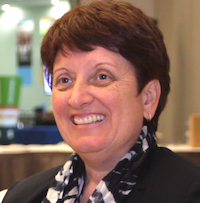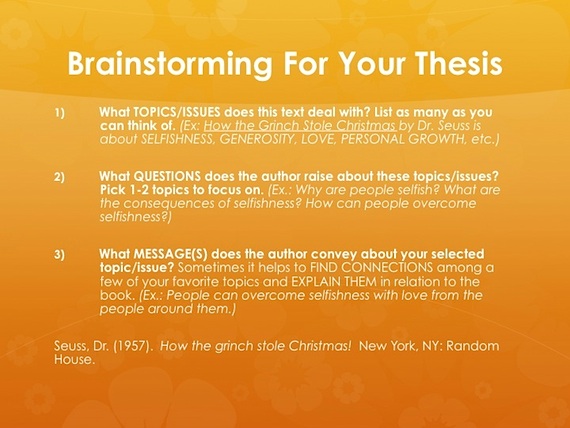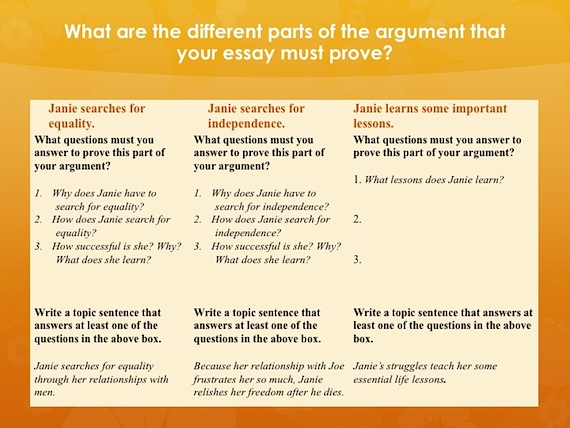How to Help Students Brainstorm an Essay
 By Sarah Tantillo
By Sarah Tantillo
It amazes me that anyone can write an entire essay without a thesis. But I’ve seen it done. I think this is why so many students hate to write. They pour hours and hours into pages and pages, only to be told that what they’ve written is unacceptable. After all that effort? Unacceptable? Sadly, yes. An essay without a thesis might have half a dozen great ideas in it, but without an organizing principle, it doesn’t hold together.
Thesis brainstorming and organizing
Our job is to spare students (and frankly ourselves) this agony by coaching them on how to write an effective thesis. The solution is to give students practice and not let them go any further until they’ve generated a viable thesis.
Once they’ve got it, then they can move on to the rest of the piece. Otherwise, you’ll need to spend more time conferencing with them. Eventually, with enough practice, they’ll get the hang of it.
Although there are numerous ways to arrive at a thesis, it helps to have a systematic approach to start with. Here’s one for an essay based on a text —
Once students have pinned down a message/argument they want to focus on, they can craft a thesis. If they are writing about a work of literature, they should include the title, author, and specific aspect(s) of the book that convey this message.
Here are some sample theses based on the novel The Street by Ann Petry:
- In The Street, Ann Petry highlights the conflicts that Lutie has with Boots, Johnson, and Jim to show the difficulty that women, both married and single, have in constructing a life for themselves.
- In The Street, Ann Petry’s characterization of Mr. and Mrs. Chandler underscores the subtle yet pervasive racism that plagues the whole African-American community.
Once the thesis is in place, students can map out the rest of the essay. Here is a completed model of the “Unpacking Your Thesis Organizer” found on The Literacy Cookbook website’s “Writing 101” page, using Zora Neale Hurston’s famous novel.
THESIS/Argument Statement: In Their Eyes Were Watching God by Zora Neale Hurston, Janie, the main character, searches for equality and independence, and she learns some important lessons along the way.
This organizer can be adapted to suit other genres as well. The key is to model how to ask compelling questions because questions drive the writing process from three angles:
- Good questions enable writers to build strong arguments.
- Good questions help writers to look for and find useful evidence.
- Writers must ask good questions in order to analyze and support their arguments.
Initially, you’ll have to provide the questions. Then you can remove the training wheels and let students generate their own. No matter what you’re doing, you should begin by providing a model of what you’re looking for.
Sarah Tantillo is a literacy consultant who taught secondary school English and Humanities in both suburban and urban public schools for fourteen years, including seven years at the high-performing North Star Academy Charter School of Newark. She’s the author of The Literacy Cookbook and offers professional development help at her blog of the same name.






































